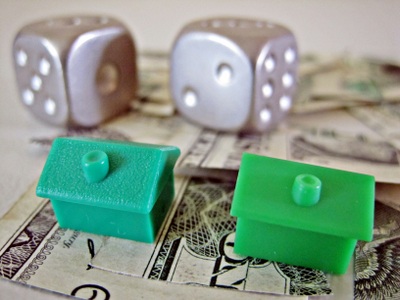Photo credit: : TaxRebate.org.uk
The number of households will increase, but they will rent more than buy
The consensus among economists is that economic growth will continue into 2016 and will usher in its eighth consecutive year of expansion by the second half of 2016. Most forecasts place enough job growth to make inroads on the national unemployment rate, with economic growth up to three percent and predict five possible scenarios in the housing market.
First, the Federal Reserve just approved a quarter-point increase in short-term interest rates, which means homeowners who have home-equity lines or adjustable-rate mortgages will likely see a rate increase next year. Fixed-rate mortgage rates may also rise up to one-half of a percentage point between now and the end of 2016, with 30-year loans seeing an interest rate of 4.5 percent. Compared to average mortgage rates during the Great Recession, the forecasted mortgage rate would be more than a full percentage point less and would still be considered historically low.
Second, starting last year, the number of households have increased, driven by improved labor markets and in 2016 we should see more than 1.25 million net households formed. This has an effect on the amount of homes sold. Lawrence Yun, chief economist at National Association of REALTORs says more than 5.4 million existing single-family homes will sell in 2016, up from the 5.3 million sold in 2015.
Third, rental housing, apartments and single-family homes, will be the dominant choice of these new households. Rental vacancy rates are close to or at the lowest levels in 30 years and rental increases are rising faster than inflation. These trends will likely continue in 2016.
Fourth, home sales and home prices will likely increase. Many families will feel more financially secure next year because of the improved economy and this may have an effect on home-buying demand. Although national home price appreciation will likely continue to outpace inflation, the CoreLogic Home Price Index projects a more moderate rise of four to five percent during 2016.
Fifth, although home purchase loan originations will likely increase 10-12 percent in volume next year, single-family mortgage originations are expected to fall about 10 percent compared to 2015’s numbers, with multifamily originations and home equity lending likely to increase.
Mr. Yun said the market will face some headwinds, such as declining pending home sales, which is a forward-looking measure of the housing market and he predicts 30-year fixed mortgage rates to rise from 3.8 to 4.5 percent. Although Yun, anticipates a lower annualized median home price rate increase in 2016 compared to 2015, a 5 percent increase versus 2015’s 5 percent increase, with the Fed’s recent move to raise short-term interest rates, homes would become even less affordable.
“Rising home prices are becoming an obstacle for first-time buyers,” Yun said.
Christian DeRitis, a senior director at Moody’s Analytics expects median prices to rise about 3.3 percent and sales to rise, but cautions that these gains won’t represent a return to the heady high-growth days.
“We’re clearly not going back to” the rate of growth during the boom, he said. “We think it’s going to be fairly contained and slow and steady.”
DeRitis, said that increasing rents will make home-buying more compelling among young professionals in more expensive markets such as California, the northeast and Florida; but Mr. Yun offers a counterpoint to DeRitis, said that homeownership, already at 50-year lows will dip further, as Millennials move out of their parents’ homes and become renters.
Sources:
CoreLogic Insights Blog. CoreLogic U.S. Economic Outlook- December 2015
CNBC. FED Raises Rates by 25 Basis Points, First Since 2006
The Wall Street Journal. Housing Market Faces Slower Growth in 2016, Realtors Say


